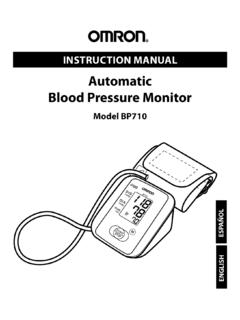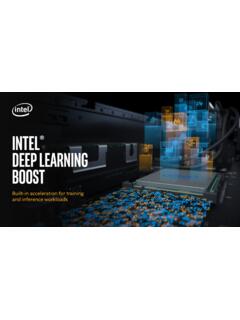Transcription of Mark Scheme (Results) January 2012 - Edexcel
1 Mark Scheme ( results ) January 2012 International GCSE Physics (4PH0) Paper 1P Science Double Award (4SC0) Paper 1P Edexcel and BTEC Qualifications Edexcel and BTEC qualifications come from Pearson, the world s leading learning company. We provide a wide range of qualifications including academic, vocational, occupational and specific programmes for employers. For further information, please call our GCE line on 0844 576 0025, our GCSE team on 0844 576 0027, or visit our qualifications website at For information about our BTEC qualifications, please call 0844 576 0026, or visit our website at If you have any subject specific questions about this specification that require the help of a subject specialist, you may find our Ask The Expert email service helpful.
2 Ask The Expert can be accessed online at the following link: Alternatively, you can speak directly to a subject specialist at Pearson about Edexcel qualifications on our dedicated Science telephone line: 0844 576 0037 Pearson: helping people progress, everywhere Our aim is to help everyone progress in their lives through education. We believe in every kind of learning, for all kinds of people, wherever they are in the world. We ve been involved in education for over 150 years, and by working across 70 countries, in 100 languages, we have built an international reputation for raising achievement through innovation in education.
3 Find out more about how we can help you and your students at: January 2012 Publications Code UG030801 All the material in this publication is copyright Pearson Education Ltd 2012 INTERNATIONAL GCSE PHYSICS 4PH0 4SC0 /1P January 2012 Question number Answer Notes Marks 1 (a) (i) A 1 (ii) B 1 (b) (i) C 1 (ii) nearest above (DOP) 1 (iii) Comment on device (plastic) insulator / does not conduct; Comment on user - no risk of shock / electrocution; (double) insulated / no current (through) / cannot become live No electricity reaches user / person cannot touch live parts 1 1 Question number Answer Notes Marks 2 (a) density = mass/volume ACCEPT equivalent rearrangement ACCEPT suitable abbreviations = m/v or d = m/v REJECT equation triangles alone 1 (b) D 1 (c) Measuring instrument Quantity measured measuring cylinder volume electronic balance mass Reject weight 1 Question number Answer Notes Marks 2 (d)
4 MAX TWO FOR EACH measuring cylinder eyes to water level / perpendicular view; to avoid parallax; measurement at bottom of meniscus; measuring cylinder on flat surface / clean cylinder; electronic balance place on stable surface /avoid disturbing balance; set to zero / check zero; finding mass without an with water (tare or subtraction); Ignore repetition wherever seen Ignore clean balance 4 (e) (i) temperature / type of water ( salinity, not heavy ) DO NOT ACCEPT answers referring to keeping the apparatus the same 1 (ii) can also affect the density / volume (DOP) ACCEPT arguments that follow through increasing temperature will increase the volume, therefore decreasing the density REJECT idea that mass is affected by change in temperature 1 Question number Answer Notes Marks 3 (a) (stopping distance =) thinking distance + braking distance Could be reversed 1 (b) Any two of.
5 As speed increases / car goes faster, the (thinking/braking/stopping) distance increases; as thinking distance increases so does braking distance; difference in pattern between thinking/braking distances identified; : increase in thinking distance < increase in braking distance / increase in thinking distance is linear or proportional / increase (in braking / stopping) is non linear / WTTE Ignore references to time Allow use of values from graph Reject: thinking distance proportional to braking distance 2 (c) 30 (m) ALLOW any value from 28 to 32 m 1 Question number Answer Notes Marks 3 (d) use the minimum / lowest values obtained REJECT find the average 1 (e) (i) (ii) thinking distance no change; depends on speed/ driver / reaction (time) braking distance increase.
6 Less friction/ less grip Ignore reference to time takes longer Ignore skidding, sliding, slippery road 2 2 Question number Answer Notes Marks 4 (a) change in direction of waves at a boundary ALLOW change in speed ALLOW idea of boundary such as changing medium, or examples such as going from air into a glass block 1 (b) correct label for i correct label for r ALLOW labels written out in full as incidence or angle of incidence etc REJECT if angles are the wrong way around 2 (c) (i) refractive index = sin i / sin r ALLOW n for refractive index REJECT speed in 1/speed in 2 1 (ii) Method max 4 marks: draw around block; mark positions of incident and emergent rays; (remove block and) draw refracted ray; measure i; measure r; measure angle(s) to the normal; range of values; Data max 2 marks: (graph of) sin i against sin r; graph is straight line; DOP gradient gives refractive index.
7 DOP Accept pin or pencil method Ignore mention of protractor different values of i not just repeating MAX 6 Question number Answer Notes Marks 5 (a) D parallel field (DOP) ACCEPT equally spaced and straight / equally spaced and do not change direction 2 (b) two (permanent / bar) magnets pole pieces arranged correctly North facing South idea of magnets being the correct distance apart ACCEPT points made on an annotated diagram REJECT description of poles as positive / negative ACCEPT close together , not touching ACCEPT idea that field is produced in the space between the N pole of one magnet and the S pole of the other REJECT answers that are clearly referring to electromagnets 3 Question number Answer Notes Marks 6 (a) (i) rocks / radon (gas) / space / cosmic / Sun / medical sources / from carbon atoms in living things REJECT named radiation gamma 1 (ii)
8 Any three from Remove source / with no source present; measure background / count; repeat / find mean / average value; subtract (background value) from experimental values (with source); ACCEPT take readings (of background) / read background Max 3 (b) (i) GRAPH S A P P L Orientation unimportant Quantity and unit on both axes Single smooth curve 5 (ii) value consistent with graph (should be minutes) 1 (c) (gamma) can be detected outside the body /can pass through; half life related to use long enough to get around the body (for use as tracer); half life related to patient safety - falls to low levels soon after use; Ignore ionising ability Reject cause less damage without reference to activity or time 3 Question number Answer Notes Marks 7 (a) ANY THREE vibration / oscillation of (air) molecules / particles; longitudinal; directions of vibration and propagation are parallel; compression / rarefaction /pressure wave.
9 Need to include what is vibrating no need to mention molecules / particles 3 (b) (i) s ALLOW 2 / 2 sig figs / 2 significant figures 1 (ii) speed = distance / time ACCEPT equivalent rearrangement ACCEPT suitable abbreviations s = d/t or v = s/t REJECT equation triangles alone 1 (iii) Student Mean time in s Speed of Sound in m/s Andrew 330 Kefe 300 1 mark each correct COLUMN (ignoring sf);; mean time values as shown in mark Scheme speed = 150/mean time (allow ecf) 1 mark for all significant figures correct; ( 2 in first row, 1 in second row) 3 Question number Answer Notes Marks 7 (c) ANY 5 relevant points, Explanation of what reaction time is; Reaction time affects readings / reaction time does matter; Reaction times vary; Reaction times do not cancel out; Reaction time should be considered / allowed for; Kefe is right (about reaction times); reaction time typically at least s; which is large compared to measured times / large % error; time should only be to 1 ; so final value should also be to 1 / Kefe s value more suitable; 3 inappropriate; closer to accepted value does not mean more accurate .
10 Answers should ideally relate to how appropriate the precision of the measurements was, linking this to the number of significant figures merited Consideration of reaction time and its measurement may score a number of marks MAX 5 Question number Answer Notes Marks 8 (a) (i) voltage = current x resistance ACCEPT equivalent rearrangement ACCEPT suitable abbreviations V = I x R REJECT V = I x REJECT equation triangles alone 1 (ii) x ; (V); 2 (iii) 12 ; (V); ECF on (ii) 2 (iv) E = VIt (NO MARK) time conversion to seconds ( x 60); x x ( x 60); 2600 (J); ECF on (iii) Allow 2592 or 2590 ALLOW 2500/2520 (J) for full marks (using 7 V) ALLOW 42 (J) or (J) for 2 marks (using 5 mins) 3 (v) idea of energy losses rate of energy loss = rate of energy supply (at steady temp) NB this statement al
















